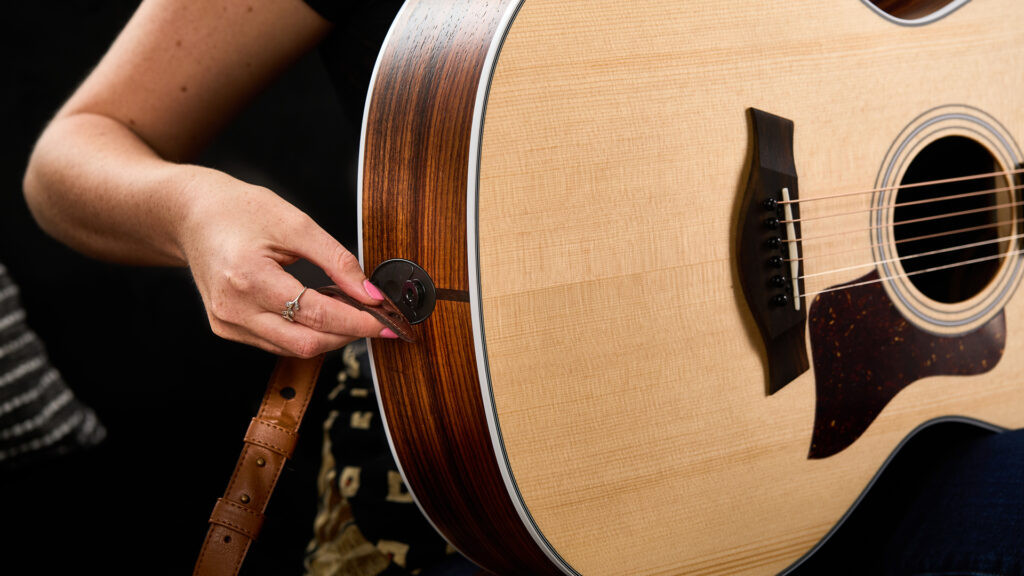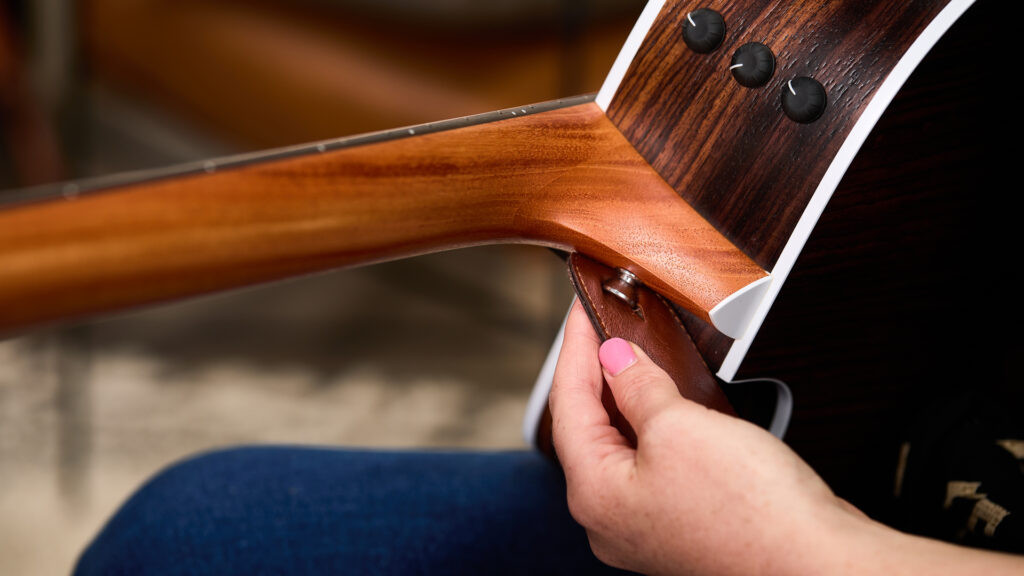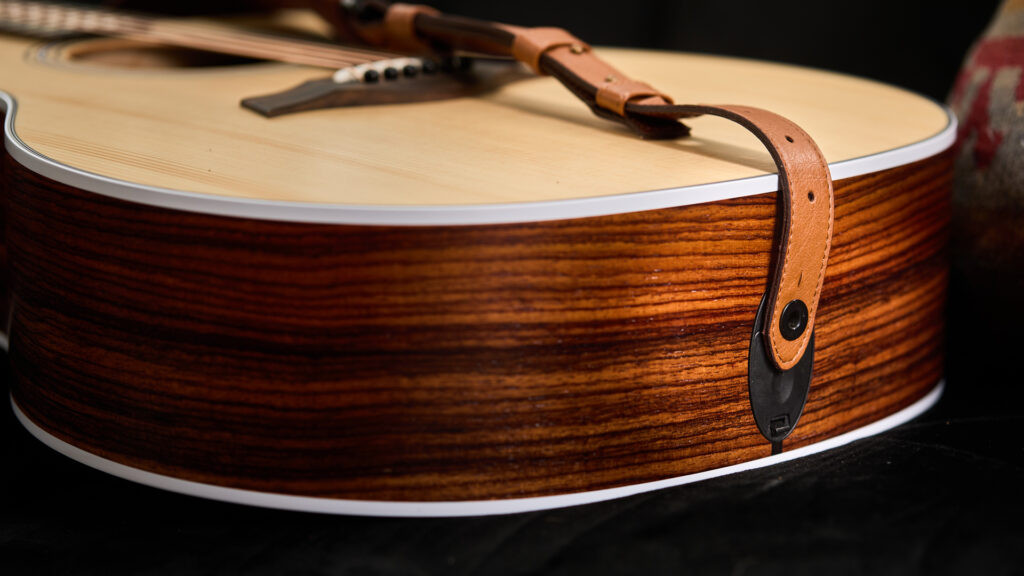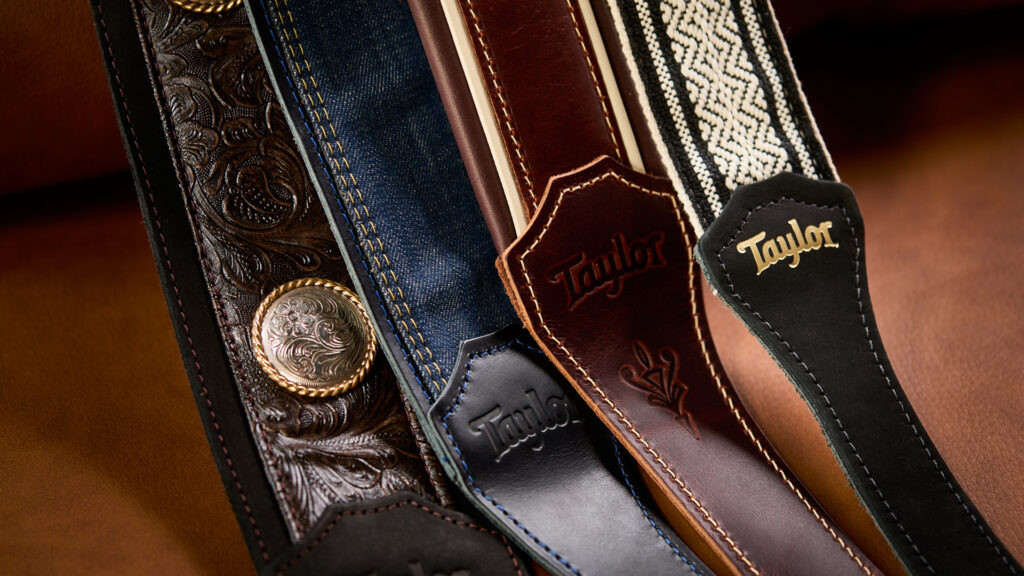A guitar strap is an indispensable accessory for any guitarist looking to play comfortably while standing or moving around. It grants you the freedom to perform on stage, rehearse in a studio, or simply practice in your living room without being tethered to a seated position. For both electric and acoustic guitar players, mastering how to correctly attach a guitar strap is a fundamental step in your musical journey.
Beyond mere functionality, the guitar strap is one of the primary contact points between you and your instrument, second only to the guitar’s body itself. Therefore, proper installation is not just about security; it’s also crucial for achieving an ergonomic and enjoyable playing experience. This guide will walk you through the process of attaching your guitar strap with confidence, ensuring you’re ready to play in any setting in no time.
Understanding Guitar Strap Attachment: Two Pins vs. One Pin
Before diving into the steps, it’s important to understand the two main types of guitar strap attachment systems you’ll encounter: two-pin and one-pin setups.
Two-Pin System: This is the most common configuration, especially on electric guitars and basses, and increasingly on acoustic guitars as well. As the name suggests, it involves two strap pins (or buttons), which are small, rounded metal posts protruding from the guitar body. Typically, one pin is located at the bottom end of the guitar, while the other is positioned either on the upper shoulder of the body or at the heel, where the neck joins the body.
One-Pin System: Frequently found on traditional acoustic guitars, this setup features only one strap pin, usually located at the bottom of the guitar. Attaching a strap to a one-pin system requires a slightly different approach, often involving securing the strap to the guitar’s headstock.
Let’s explore how to attach your strap correctly for both of these systems.
Step-by-Step Guide: Attaching a Strap to a Two-Pin Guitar
If your guitar has two strap pins, follow these simple steps to securely attach your guitar strap:
-
Orient Your Strap Correctly: While some straps are symmetrical, many are designed with a specific orientation. Look for features that indicate the intended top and bottom. Straps with sliding plastic buckles usually have the buckle end oriented towards the bottom pin. Similarly, if one end of the strap is noticeably thinner or features a design or logo, the more elaborate or thicker end typically attaches to the pin closer to the guitar’s neck.
 Orienting the guitar strap before attaching to the bottom pin
Orienting the guitar strap before attaching to the bottom pin -
Attach the Strap to the Bottom Pin: Take one end of your guitar strap and locate the pre-cut hole or slit designed for strap pin attachment. Carefully push the strap pin through this hole. Ensure the strap end is securely fitted around the pin, preventing it from slipping off. You might need to apply a bit of pressure, especially with new leather or thicker strap ends.
-
Attach the Strap to the Top Pin: Take the remaining end of the strap and repeat the process, inserting the remaining strap pin through the corresponding hole or slit on this end of the strap. Again, make sure it’s snugly and securely attached.
 Attaching the guitar strap to the top pin near the neck
Attaching the guitar strap to the top pin near the neck -
Perform a Security Check: Before trusting your guitar to the strap, gently tug on each end of the strap where it connects to the pins. This test ensures that the strap is firmly in place and will not detach during playing. A secure fit is crucial for preventing accidental drops and potential damage to your instrument.
Even with a two-pin system, some players might prefer the strap attachment method used for one-pin acoustic guitars, particularly if they desire a different weight balance. Feel free to experiment to find your preference.
Attaching a Strap to a One-Pin Acoustic Guitar: The Headstock Method
Many acoustic guitars come with only a single strap pin at the base of the instrument. While installing a second pin is an option, the standard method for attaching a strap to a one-pin guitar is straightforward and doesn’t require any modifications to your guitar.
-
Initial Attachment to the Bottom Pin: Begin by following steps 1 and 2 from the two-pin method above. Secure one end of your strap to the strap pin located at the bottom of your acoustic guitar.
-
Securing the Other End to the Headstock: Bring the unattached end of the strap up towards the guitar’s headstock. Since there’s no strap pin here, you’ll need to use an alternative method to secure the strap. This typically involves using a piece of material like a leather lace, a sturdy string, or a specialized Strap Adapter. Many guitar straps actually include a lace specifically for this purpose.
-
Using a Lace or Strap Adapter: Thread the lace or strap adapter through the hole or slit at the end of your guitar strap. Then, carefully thread both ends of the lace (or the adapter strap) underneath the guitar strings, just above the nut on the headstock. If using a lace, tie a secure double knot to fasten the strap to the headstock. If you’re using a strap adapter, follow the manufacturer’s instructions to securely attach it, often involving a buckle or clip mechanism.
-
Understanding Weight Balance: Attaching the strap to the headstock versus using two pins creates a noticeable difference in how the guitar’s weight is distributed. Headstock attachment generally balances the guitar’s weight more towards the center of your body. Two-pin systems, especially those with the top pin on the guitar’s shoulder, tend to shift the center of gravity slightly lower, towards the guitar’s lower bout. This difference in balance can influence playing comfort and is a matter of personal preference. Experiment with both methods if possible to determine what feels best for you.
Adjusting Your Guitar Strap for Perfect Comfort and Playing Position
Once your strap is attached, achieving the correct strap length is crucial for comfortable playing and proper hand positioning. Learning how to adjust your strap efficiently is an essential skill for any guitarist.
While personal preference and visual aesthetics play a role in strap length, ergonomic considerations are paramount. Ideally, your strap should be adjusted so that when you’re standing, your fret hand and wrist remain relaxed and you can comfortably reach all notes and chords without excessive bending or stretching. Maintaining a relaxed wrist is vital for preventing strain and potential injuries over time.
Adjusting Straps with Sliding Buckles: Many modern guitar straps are equipped with a sliding plastic buckle, making on-the-fly adjustments incredibly easy. To lengthen the strap, slide the buckle away from the guitar’s neck, towards the lower bout. To shorten it, slide the buckle towards the neck. You can perform these adjustments while wearing the guitar, allowing you to fine-tune the length in real-time.
Adjusting Leather or Suede Straps (Two-Piece System): Traditional leather or suede straps often utilize a two-piece design for length adjustment. These straps typically require detaching the smaller adjustment piece from the main strap body to alter the length.
 Adjusting a two-piece leather guitar strap
Adjusting a two-piece leather guitar strap
The wider strap piece will have a series of slits that correspond to different strap lengths. To adjust, thread the thin strap piece upwards from the underside of the wider strap and pull it taut. Then, weave it back through itself by passing it through an adjacent slit. Finally, continue threading it through at least one or two more slits as it travels down towards the bottom strap button. Experiment with different slit combinations to find the strap height that suits your playing style and body size. Remember to reattach the strap to your guitar after adjusting to test the new length.
Enhancing Security: Why You Should Consider Strap Locks
For added security and peace of mind, especially when performing or moving dynamically while playing, consider using strap locks. Guitar strap locks are aftermarket hardware pieces that replace your existing strap buttons and strap ends, creating a locking mechanism that prevents the strap from accidentally detaching from your guitar.
Strap locks are particularly beneficial for preventing dreaded guitar drops, which can lead to significant damage. They provide an extra layer of security, ensuring your instrument remains safely attached to your strap, even under energetic stage movements or accidental bumps.
Numerous strap lock systems are available, ranging in design and materials. Exploring different options, such as button-style locks or quick-release systems, can help you find the best solution for your needs and guitar type.
Choosing the Right Guitar Strap: Material, Comfort, and Style
Knowing how to put on a guitar strap is just the beginning. With a vast array of materials, widths, padding options, and styles available, selecting the right guitar strap is equally important for comfort, durability, and expressing your personal style.
 Variety of guitar strap materials and styles
Variety of guitar strap materials and styles
Material Considerations: The material of your guitar strap significantly impacts its durability, comfort, and price. Popular strap materials include:
- Leather: Classic, durable, and often develops a rich patina over time.
- Vegan Leather: A synthetic alternative that mimics the look and feel of leather, often more affordable and animal-friendly.
- Suede: Soft, comfortable, and provides good grip, preventing slippage.
- Denim: Casual, stylish, and can be a durable and unique option.
- Cotton: Affordable, lightweight, breathable, and comes in a wide variety of colors and patterns.
Regardless of the primary strap material, the ends that attach to the strap buttons are typically made of leather or suede for added security and a snug fit.
Material choice can also be influenced by genre or guitar type. Leather and suede straps are often associated with acoustic guitars, while cotton straps are commonly paired with electric guitars, although these are just general trends, and personal preference always reigns supreme. More expensive straps tend to be more durable, with leather and suede options typically outlasting cotton straps. However, cotton straps offer excellent value, comfort, and breathability, making them ideal for stage performances and practice sessions.
Padding for Enhanced Comfort: Guitars, while not excessively heavy, can still cause discomfort over extended playing sessions, especially during long rehearsals or performances. Padded guitar straps, often featuring foam or similar cushioning, can significantly improve comfort by distributing the guitar’s weight more evenly across your shoulder, reducing pressure points and fatigue. Padded straps are particularly beneficial for heavier guitars and longer playing durations.
Width for Weight Distribution: The width of your guitar strap also affects weight distribution. Narrower straps concentrate the guitar’s weight on a smaller area of your shoulder, which can lead to discomfort. Wider straps, typically 2.5″ to 3″ wide (compared to the average 2″ cotton strap), distribute the weight more broadly, enhancing comfort, especially for players who primarily play standing up.
Aesthetic Expression: Your guitar strap is an extension of your personal style. Straps are available in virtually every color and pattern imaginable, from minimalist black cotton to elaborately embroidered leather straps adorned with nickel conchos and unique designs.
 A stylish brown leather guitar strap
A stylish brown leather guitar strap
Choose a strap that complements your guitar’s aesthetics or provides a striking contrast for a bolder statement, like a vibrant blue denim strap against a natural wood finish. Ultimately, select a strap that resonates with your personal style and makes you feel good while playing.
Time to Strap In and Play!
A guitar strap is more than just a functional accessory; it’s a key component in enabling your musical expression and a reflection of your personal style. A great strap should be both comfortable and stylish, a philosophy that guides the design and craftsmanship of our straps as much as it does our guitars.
Now that you’ve mastered the art of putting on a guitar strap, you’re ready to explore other essential guitar skills. Continue your journey by learning how to hold a guitar pick correctly and how to tune your acoustic guitar to ensure you’re always ready to play your best.

